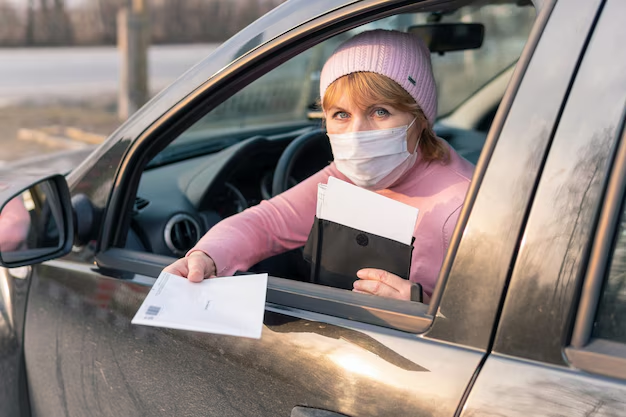When Can You Safely Get Back Behind the Wheel After Cataract Surgery?
Imagine waking up one day to find that the world around you is hazy, like looking through a foggy window. For many, cataracts make this all too real, clouding vision and impacting daily life. Fortunately, cataract surgery offers a proven solution, restoring clarity and enhancing quality of life. However, a common question arises for those undergoing this procedure: When can I drive again after cataract surgery?
This comprehensive guide will help answer that question by exploring the considerations involved, providing context, and offering practical insights. Our aim is to give you the clarity needed to make informed, safe decisions about getting back on the road.
Understanding Cataract Surgery
Before diving into post-surgery activities, it's important to understand what cataract surgery entails. Cataracts cloud the eye’s natural lens, leading to impaired vision. During surgery, this cloudy lens is replaced with a clear artificial one. The procedure is typically quick, often completed in less than an hour, and is performed on an outpatient basis.
The Road to Recovery
The recovery period is crucial in determining when daily activities, such as driving, can be resumed. Everyone’s healing process varies, and multiple factors, including age, overall health, and eye condition, can influence recovery time.
Initial Post-Surgery Phase: The First 24-48 Hours
Immediately after surgery, precautions are paramount. Patients are usually advised:
- Avoid driving: You're often given anesthesia that can affect your reaction time and judgment, making it unsafe to drive.
- Protect your eyes: An eye patch or shield may be used to prevent accidental damage.
- Rest is vital: Allow your body to start the healing process without strain.
The Importance of Follow-Up Appointments
Follow-Up Appointments are typically scheduled within a day or two after surgery. During this visit, your ophthalmologist will evaluate your vision, check for complications, and provide guidance on when driving might be safe again.
Factors Influencing the Return to Driving
Deciding when to drive after cataract surgery isn't a one-size-fits-all determination. Consider the following factors that can impact your return to driving:
1. Visual Acuity
Achieving adequate visual acuity is critical for driving safety. Post-surgery, some patients may quickly see improvements, while others might need additional time or corrective lenses to achieve ideal vision.
2. Eye Comfort and Sensitivity
Sensitivity to Light: Bright lights or glare can be uncomfortable post-surgery. If this is an issue, it can affect your ability to drive safely in varying lighting conditions, especially at night.
3. Age and Overall Health
Older patients or those with additional health conditions might experience a slower recovery, necessitating a longer delay before resuming driving.
What Experts Generally Recommend
While each person's recovery is individual, expert perspectives and general trends suggest that many patients might be able to drive safely within a few days to two weeks post-surgery. However, this timeline can vary, and the ultimate decision should be based on:
- Recommendation from Your Ophthalmologist: Their approval hinges on your specific recovery status.
- Self-Assessment: Individual factors like comfort level and confidence in driving should also play a role.
Common Signs It Might Be Safe to Drive Again
- You experience no discomfort, light sensitivity, or complications.
- Vision is sufficiently clear and meets driving regulations without requiring immediate corrective lenses.
- You’ve practiced driving skills, e.g., reaction time and maneuvering, in a controlled environment.
Steps for a Safe Return to Driving 🚗
Here’s a concise checklist to help you prepare for safely driving post-surgery:
- 🌟 Consult with Your Ophthalmologist: Get a professional assessment and approval based on your visual recovery.
- 🚦 Test Vision: Ensure your vision meets the legal standards for driving in your area.
- 👓 Consider Eyewear: Check if corrective lenses are needed post-surgery to meet vision requirements.
- 🌞 Use Sunglasses if Necessary: Protects against sensitivity to natural light.
- 🏁 Start in Familiar Areas: Begin driving in familiar, less congested areas to rebuild confidence.
Practical Consumer Tips 🤓
- Avoid Night Driving: At first, avoid driving at night or in poor weather conditions until you’re comfortable.
- Seek Feedback: Ask someone to accompany you and provide feedback on your driving readiness.
- Keep Eyes Moisturized: Use recommended eye drops to combat dryness, a common issue post-surgery.
Conclusion: Navigating the Path to Recovery
The journey from cataract surgery to safely driving again can vary greatly from one individual to another. While your ophthalmologist’s input is invaluable, your comfort and confidence are equally paramount. Visual clarity and safety are the ultimate goals.
Remember, the guidelines and choices surrounding post-cataract surgery driving are more than just steps to follow—they're about ensuring a lifetime of clear vision and safe travels. Your journey to recovery involves patience, awareness, and some road testing, but ultimately leads back to confidently enjoying the independence and freedom driving provides. Keep your vision clear and your travels safe!
